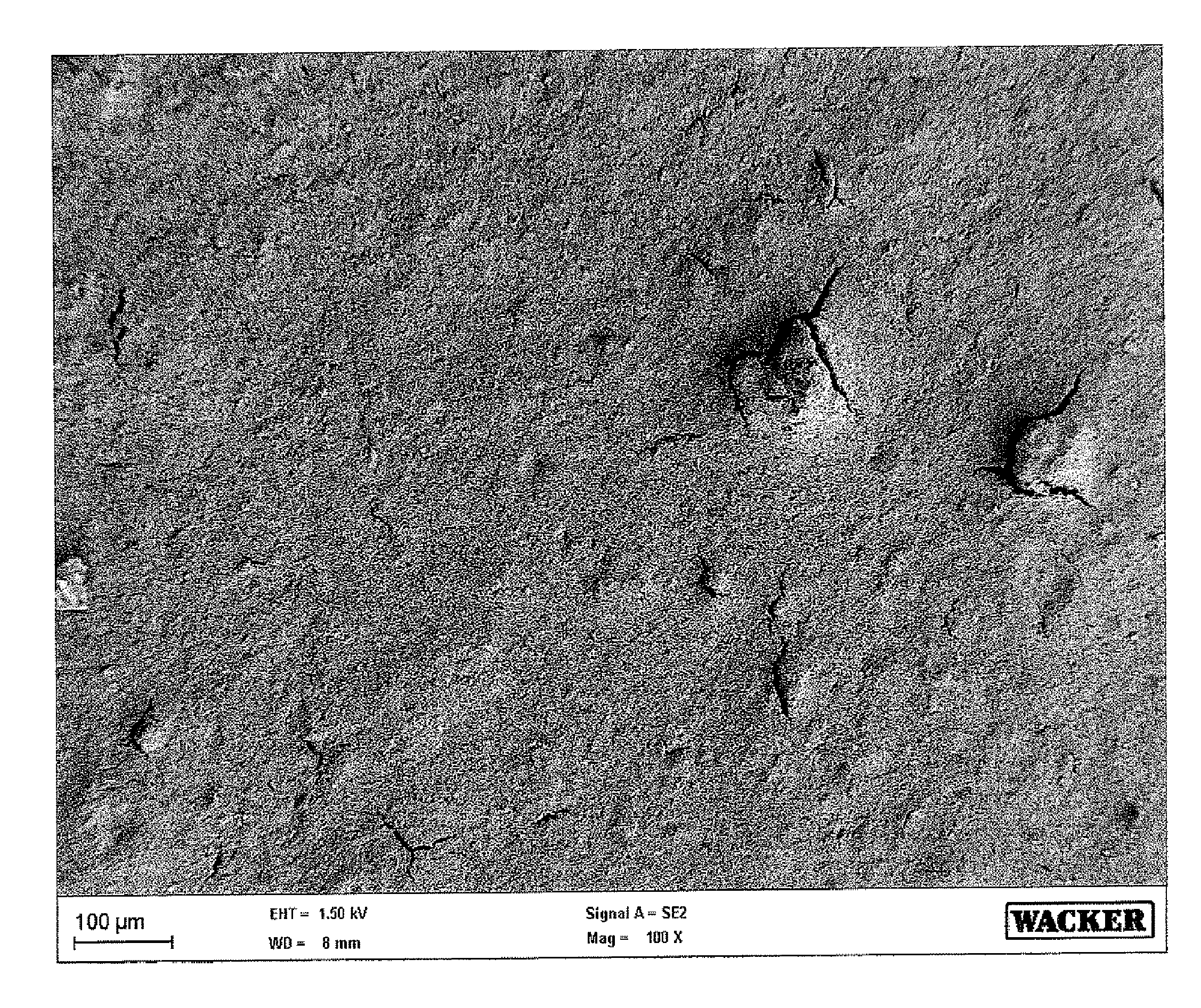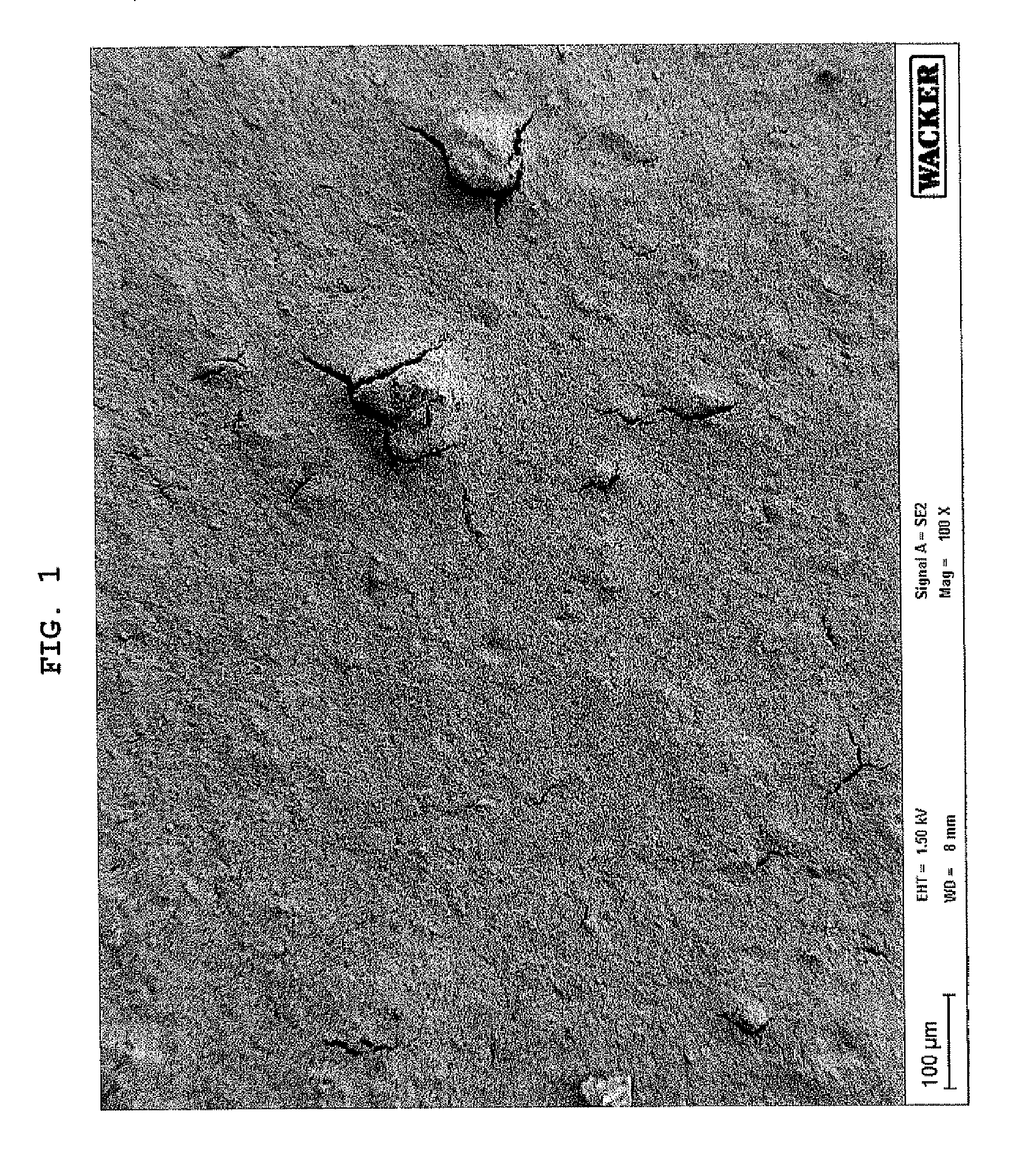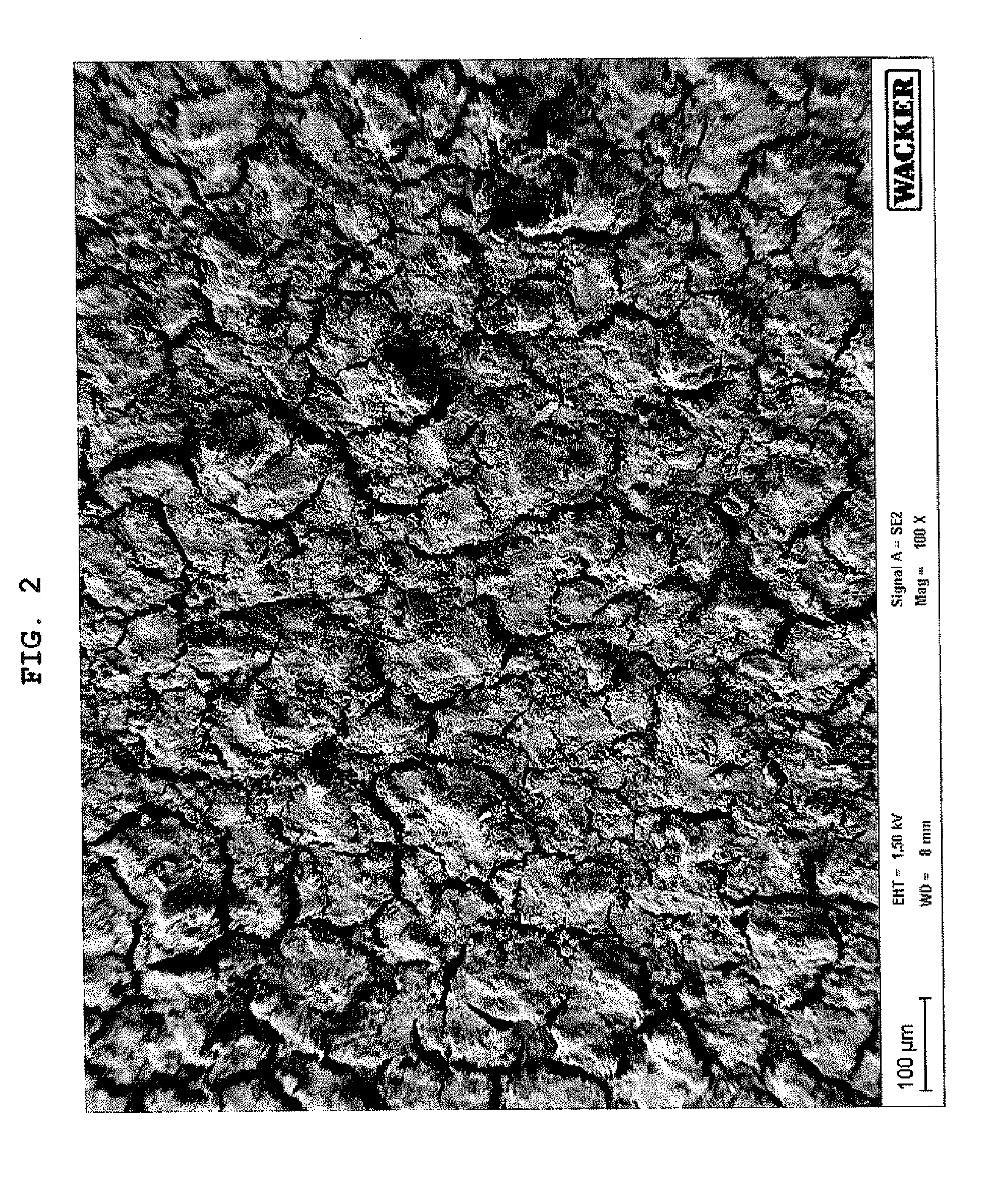Highly Hydrophobic Coatings
a technology of hydrophobic coatings and coatings, applied in the direction of instruments, record information storage, transportation and packaging, etc., can solve the problems of mechanical stability of the structure produced, silica cake or body crumbling or disintegrating, etc., and achieve the effect of improving the state of the art and mechanical stability
- Summary
- Abstract
- Description
- Claims
- Application Information
AI Technical Summary
Benefits of technology
Problems solved by technology
Method used
Image
Examples
example 1
[0120]Condensation-crosslinking silicone rubber, amine-eliminating; with hydrophobic silica in a 250 ml plastic beaker, 75 g of a hydrocarbon mixture having a boiling range of 80 to 110° C. are introduced, 15 g of OH-terminated PDMS (polydimethylsiloxane) having a viscosity of about 6000 mPas are added, and the mixture is mixed intensely in a Dispermat at 1500 / min for ten minutes at room temperature. Then 4.0 g of a common hydrophobic fumed silica, for example HDK® H18 from Wacker, are added and are incorporated at the same rotary speed within about 10 minutes at room temperature. Subsequently 1.5 g of methyl-tris(cyclohexylamino)silane crosslinker are added, and combining takes place for a further 2 minutes at the same rotary speed at RT.
[0121]This dispersion is drawn down using a doctor blade in a wet film thickness of 200 μm and at room temperature the solvent is evaporated for 24 hours and the silicone rubber is subjected to crosslinking under the influence of atmospheric moistu...
example 2
[0123]Condensation-crosslinking silicone rubber, amine-eliminating; with hydrophilic silica in a 250 ml plastic beaker, 75.5 g of a hydrocarbon mixture having a boiling range of 80 to 110° C. are introduced, 15 g of OH-terminated PDMS having a viscosity of about 6000 mPas are added, and the mixture is mixed intensely in a Dispermat at 1500 / min at room temperature. Then 4.5 g of a hydrophilic fumed silica, for instance the commercially available type Wacker HDK® D05, are added and are incorporated at the same rotary speed within about 10 minutes at room temperature. Subsequently 1.5 g of methyl-tris(cyclohexylamino)silane crosslinker are added, and combining takes place for a further 2 minutes at the same rotary speed at room temperature.
[0124]This dispersion is drawn down using a doctor blade in a wet film thickness of 200 μm and at room temperature the solvent is allowed to evaporate for 24 hours and the silicone rubber is subjected to crosslinking under the influence of atmospheri...
example 3
[0126]Preparation of a condensation-crosslinking RTV silicone rubber starting system, oxime-based: a 250 ml plastic beaker is charged with 100 g of a hydrocarbon mixture having a boiling range of 80 to 110° C., and 50 g of OH-terminal PDMS polymer having a viscosity of 20 000 mPas are added, and mixing takes place at room temperature in a Dispermat at 300 / min over the course of 3 minutes, after which this mixture is admixed with 5.0 g of methyl-tris(methylethylketoximato)silane, and, after a further ten minutes' mixing time at 300 / min, 0.25 g of a commercially available tin-based crosslinking catalyst is added, and is incorporated by stirring at identical rotary speed for one minute, and this mixture is then kept in a firmly sealed vessel.
PUM
| Property | Measurement | Unit |
|---|---|---|
| water drop roll-off angle | aaaaa | aaaaa |
| boiling point | aaaaa | aaaaa |
| boiling point | aaaaa | aaaaa |
Abstract
Description
Claims
Application Information
 Login to View More
Login to View More - R&D
- Intellectual Property
- Life Sciences
- Materials
- Tech Scout
- Unparalleled Data Quality
- Higher Quality Content
- 60% Fewer Hallucinations
Browse by: Latest US Patents, China's latest patents, Technical Efficacy Thesaurus, Application Domain, Technology Topic, Popular Technical Reports.
© 2025 PatSnap. All rights reserved.Legal|Privacy policy|Modern Slavery Act Transparency Statement|Sitemap|About US| Contact US: help@patsnap.com



